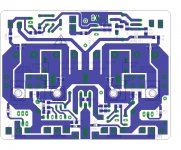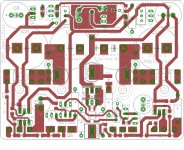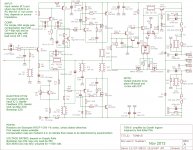I find the two layer layout too difficult to follow/read.
If you could post layout with top turned off and another with bottom turned off, I may have time to work my way through it.
If you could post layout with top turned off and another with bottom turned off, I may have time to work my way through it.
FKP are a really good choice 🙂
Yup,
Many yrs. back when I deal with 100KV pulses discharge in to 4 spark plugs I have to order for manufacture a special type of caps for that purpose. I then learn the lesson. Some 10 yrs back I got an idea what if I scale down that and use in my old fash. direct MC phono-RIAA preamp to use the same trick but scalled downt to the ultra low voltage caps (100V). I then do a lot of the trial and error tests and once I figured out what is most important in this particular situation I end up with special selection procedure caps. and use two of each equal value - selected & correctly marked but used as a one requ. value and soldered in opposite inductance value direction. All was done with a lot of listening and measurements with a real music high Vin (5V) snare drum impulse superimposed with 0.25V 20KHz square into it true passive inv. RIAA box (made on the same principles) and with a lot of comparison in time + freque. domain and again with lots of listening tests. The end result was surprised me and it stays the same till todays. No other single cap. be it expensive to the sky cannot convince me to exchange it for my chosen tandem caps ''I select'', they were KPs. 🙂
Cheers,
A.
Member
Joined 2009
Paid Member
used as a one requ. value and soldered in opposite inductance value direction.
Hi Andreas, I didn't quite understand what you meant by this ?
Member
Joined 2009
Paid Member
If you could post layout with top turned off and another with bottom turned off
Attached...
I'm quite happy to see better parts recommendations - so the WIMA is good with me (if they fit).
Attachments
Last edited:
Member
Joined 2009
Paid Member
I noticed the resistor values for the feedback network were wrong, they were P3a values which has an LTP whereas this amplifier with current feedback should be low impedance. I've updated the schematic and BOM.
Christian, you might consider that even the low power version with a feedback resistor of 1.2k would be better if it had 1.5k for higher gain. And I suggest you seek out a better quality feedback resistor than I just put into the BOM. It needs only be 1W.
Christian, you might consider that even the low power version with a feedback resistor of 1.2k would be better if it had 1.5k for higher gain. And I suggest you seek out a better quality feedback resistor than I just put into the BOM. It needs only be 1W.
Attachments
Last edited:
Member
Joined 2009
Paid Member
I'm ready to arrange for a batch of pcb's to get shipped to Ranchu32 and I will likely order a batch for myself (10 boards in a batch if I remember).
Any desire for further error checking - Andrew ?
Any desire for further error checking - Andrew ?
who wrote that for Wima?
They have the less than and greater than back to front !
Hi Andrew... surprising and attentive as usual.... what do you mean ?
Yup,
Many yrs. back when I deal with 100KV pulses discharge in to 4 spark plugs I have to order for manufacture a special type of caps for that purpose. I then learn the lesson. Some 10 yrs back I got an idea what if I scale down that and use in my old fash. direct MC phono-RIAA preamp to use the same trick but scalled downt to the ultra low voltage caps (100V). I then do a lot of the trial and error tests and once I figured out what is most important in this particular situation I end up with special selection procedure caps. and use two of each equal value - selected & correctly marked but used as a one requ. value and soldered in opposite inductance value direction. All was done with a lot of listening and measurements with a real music high Vin (5V) snare drum impulse superimposed with 0.25V 20KHz square into it true passive inv. RIAA box (made on the same principles) and with a lot of comparison in time + freque. domain and again with lots of listening tests. The end result was surprised me and it stays the same till todays. No other single cap. be it expensive to the sky cannot convince me to exchange it for my chosen tandem caps ''I select'', they were KPs. 🙂
Cheers,
A.
Also have been experimenting with that technology and am quite pleased with the results (I mean using two half capacitance kp caps together in "opposite inductance value direction").
It seems these "builds" are able to mimic some "supercap" characteristics at a 1/10 price 🙂
Member
Joined 2009
Paid Member
Hi Bigun
I followed this thread closely and most of the discussions is beyond me !!
I am interested because everytime i listen to the P3a from Rod, it bring a smile to me.
Have you any plan to run a through hole version of the board in future?
Through hole parts are easier to obtain in my area.
cheers
kp93300
I followed this thread closely and most of the discussions is beyond me !!
I am interested because everytime i listen to the P3a from Rod, it bring a smile to me.
Have you any plan to run a through hole version of the board in future?
Through hole parts are easier to obtain in my area.
cheers
kp93300
Member
Joined 2009
Paid Member
Hi kp93300,
I would consider it, but it shouldn't be a problem getting what you need for the version we are making so far in this thread - you can get just about anything by mail-order.
Where in Malaysia are you ? - I have family in Seremban and KL. Wonderful country.
I would consider it, but it shouldn't be a problem getting what you need for the version we are making so far in this thread - you can get just about anything by mail-order.
Where in Malaysia are you ? - I have family in Seremban and KL. Wonderful country.
Hi Bigun
I am from the land of the Hornbills--Borneo island.
If you are holidaying In malaysia now,you should try the king of the fruit ---durian . The mangosteen is another must try fruit .
The experience will be as memorable as the P3 A amp !!!!


cheers
kp93300
I am from the land of the Hornbills--Borneo island.
If you are holidaying In malaysia now,you should try the king of the fruit ---durian . The mangosteen is another must try fruit .
The experience will be as memorable as the P3 A amp !!!!


cheers
kp93300
Hi Andreas, I didn't quite understand what you meant by this ?
It seems these "builds" are able to mimic some "supercap" characteristics at a 1/10 price 🙂
Hi, Gareth, R.Cruz,
Maybe a little off topic but I did some quick measurements in my job lab and here are the very quick results. If You just try to each image save as - You can read the short info of each image meaning. As You can see from images with a little trial measurements it is possible to select really very good ''TANDEM CAPs'' values needed with almost eliminating or at list halving the most disturbing parasitic effects which do the most unexplainable effects to the circuits when they're used, thus designers and diyers to blame theirs circuits of a strange oscillations, phase shifts-bumps etc...
The graphs are captured with my phone and the images are with limited resolution but they're also all SELF EXPLAINABLE and were measured with fast sweeps from 20Hz to 10 MHz just to quick get a basic info of the DUT, it is also possible to get 10x higher resolution with higher bandwidths but it consumes a lot of time and is intend only for serious job analyses.
Almost all the same parasitic are present also in resistors, coils, PCB Traces, active semis BJTs Fets measured in live circuits from pin to pin incl. PCB traces within + - 10V, etc....
When observing this way a whole new picture of a particular Element, circuit, is arising and explain a lot of new why and how... to proceed.
With my best regards,
Attachments
-
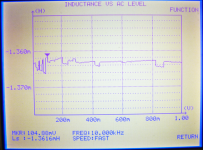 09_CAP_L_SERIALL_AC_TEST-4_2x50nF-MKP'2-(250V)--(DUAL--AC--INDUCTANCE-CANCELING-CONFIG)'.png425.4 KB · Views: 155
09_CAP_L_SERIALL_AC_TEST-4_2x50nF-MKP'2-(250V)--(DUAL--AC--INDUCTANCE-CANCELING-CONFIG)'.png425.4 KB · Views: 155 -
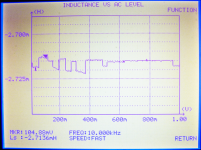 08_CAP_L_SERIALL_AC_TEST-3_2x50nF-MKP'2-(250V)--(DUAL--AC--INDUCTANCE-CANCELING-CONFIG)'.png419.6 KB · Views: 159
08_CAP_L_SERIALL_AC_TEST-3_2x50nF-MKP'2-(250V)--(DUAL--AC--INDUCTANCE-CANCELING-CONFIG)'.png419.6 KB · Views: 159 -
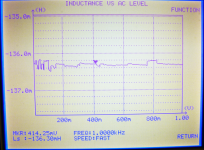 07_CAP_L_SERIALL_AC_TEST-2_2x50nF-MKP'2-(250V)--(DUAL--AC--INDUCTANCE-CANCELING-CONFIG)'.png435.9 KB · Views: 169
07_CAP_L_SERIALL_AC_TEST-2_2x50nF-MKP'2-(250V)--(DUAL--AC--INDUCTANCE-CANCELING-CONFIG)'.png435.9 KB · Views: 169 -
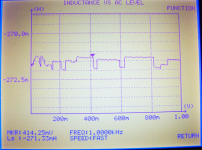 06_CAP_L_SERIALL_AC_TEST-1_CAP-1x100nF-MKP'2-(250V)''(SINGLE_CAP)''.png444 KB · Views: 165
06_CAP_L_SERIALL_AC_TEST-1_CAP-1x100nF-MKP'2-(250V)''(SINGLE_CAP)''.png444 KB · Views: 165 -
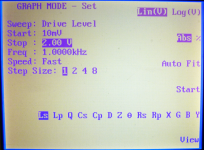 05_SETTINGS_CAP_L_SERIAL_INDUCTANCE_AC_TEST.png427.3 KB · Views: 188
05_SETTINGS_CAP_L_SERIAL_INDUCTANCE_AC_TEST.png427.3 KB · Views: 188 -
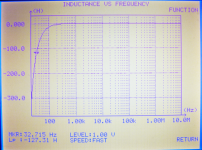 04_CAP_L_PARALELL_AC_TEST-2x50nF-MKP'2-(250V)--(DUAL--AC--INDUCTANCE-CANCELING-CONFIG)'.png441.4 KB · Views: 798
04_CAP_L_PARALELL_AC_TEST-2x50nF-MKP'2-(250V)--(DUAL--AC--INDUCTANCE-CANCELING-CONFIG)'.png441.4 KB · Views: 798 -
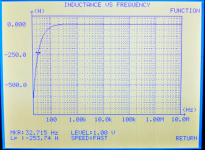 03_CAP_L_PARALELL_AC_TEST_1x100nF-MKP'2-(250V)--''(SINGLE_CAP)''.png465.6 KB · Views: 835
03_CAP_L_PARALELL_AC_TEST_1x100nF-MKP'2-(250V)--''(SINGLE_CAP)''.png465.6 KB · Views: 835 -
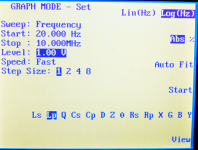 02_SETTINGS_CAP_L_PARALELLL_INDUCTANCE_AC_TEST.png414.3 KB · Views: 875
02_SETTINGS_CAP_L_PARALELLL_INDUCTANCE_AC_TEST.png414.3 KB · Views: 875 -
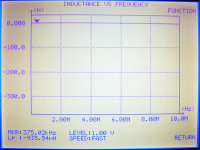 01_GOOD-MATCHED-2_2x50nF-MKP'2-(250V)--(DUAL--AC--INDUCTANCE-CANCELING-CONFIG)'.png423.3 KB · Views: 918
01_GOOD-MATCHED-2_2x50nF-MKP'2-(250V)--(DUAL--AC--INDUCTANCE-CANCELING-CONFIG)'.png423.3 KB · Views: 918 -
 00_OPTIMALLY_SELECTED_TANDEM_CAPS_@.jpg81.7 KB · Views: 946
00_OPTIMALLY_SELECTED_TANDEM_CAPS_@.jpg81.7 KB · Views: 946
Continue ....
Attachments
-
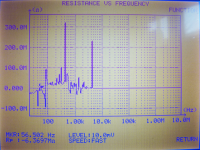 16_CAP_R_PARALELL_AC_TEST-1x100nF-MKP'2-(250V)---(SINGLE-CAP).png494.1 KB · Views: 140
16_CAP_R_PARALELL_AC_TEST-1x100nF-MKP'2-(250V)---(SINGLE-CAP).png494.1 KB · Views: 140 -
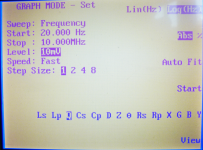 17_SETTINGS_CAP_Q_AC_TEST.png403.8 KB · Views: 154
17_SETTINGS_CAP_Q_AC_TEST.png403.8 KB · Views: 154 -
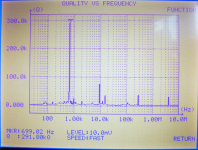 18_CAP_Q_AC_TEST-1x100nF-MKP'2-(250V)--(SINGLE_CAP)''.png474.7 KB · Views: 149
18_CAP_Q_AC_TEST-1x100nF-MKP'2-(250V)--(SINGLE_CAP)''.png474.7 KB · Views: 149 -
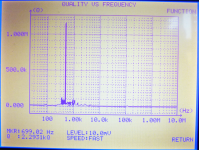 19_CAP_Q_AC_TEST-2x50nF-MKP'2-(250V)--(DUAL--AC--INDUCTANCE-CANCELING-CONFIG)''.png481.1 KB · Views: 143
19_CAP_Q_AC_TEST-2x50nF-MKP'2-(250V)--(DUAL--AC--INDUCTANCE-CANCELING-CONFIG)''.png481.1 KB · Views: 143 -
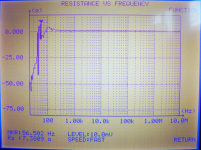 15_CAP_R_PARALELL_AC_TEST-2_2x50nF-MKP'2-(250V)--(DUAL--AC--INDUCTANCE-CANCELING-CONFIG)'.png480 KB · Views: 141
15_CAP_R_PARALELL_AC_TEST-2_2x50nF-MKP'2-(250V)--(DUAL--AC--INDUCTANCE-CANCELING-CONFIG)'.png480 KB · Views: 141 -
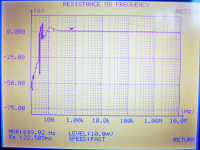 14_CAP_R_PARALELL_AC_TEST-1-2x50nF-MKP'2-(250V)--(DUAL--AC--INDUCTANCE-CANCELING-CONFIG)'.png472.5 KB · Views: 132
14_CAP_R_PARALELL_AC_TEST-1-2x50nF-MKP'2-(250V)--(DUAL--AC--INDUCTANCE-CANCELING-CONFIG)'.png472.5 KB · Views: 132 -
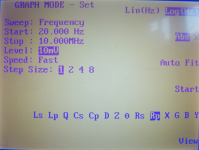 13_SETTINGS_CAP_RP_IMPEDANCE_PARALELL_AC_TEST.png409.1 KB · Views: 123
13_SETTINGS_CAP_RP_IMPEDANCE_PARALELL_AC_TEST.png409.1 KB · Views: 123 -
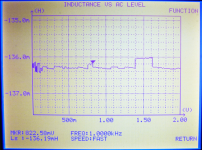 12_CAP_L_SERIALL_AC_TEST-7_2x50nF-MKP'2-(250V)--(DUAL--AC--INDUCTANCE-CANCELING-CONFIG)'.png460 KB · Views: 131
12_CAP_L_SERIALL_AC_TEST-7_2x50nF-MKP'2-(250V)--(DUAL--AC--INDUCTANCE-CANCELING-CONFIG)'.png460 KB · Views: 131 -
 11_CAP_L_SERIALL_AC_TEST-6_2x50nF-MKP'2-(250V)--(DUAL--AC--INDUCTANCE-CANCELING-CONFIG)'.png442.3 KB · Views: 132
11_CAP_L_SERIALL_AC_TEST-6_2x50nF-MKP'2-(250V)--(DUAL--AC--INDUCTANCE-CANCELING-CONFIG)'.png442.3 KB · Views: 132 -
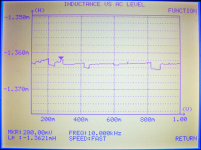 10_CAP_L_SERIALL_AC_TEST-5_2x50nF-MKP'2-(250V)--(DUAL--AC--INDUCTANCE-CANCELING-CONFIG)'.png446.2 KB · Views: 150
10_CAP_L_SERIALL_AC_TEST-5_2x50nF-MKP'2-(250V)--(DUAL--AC--INDUCTANCE-CANCELING-CONFIG)'.png446.2 KB · Views: 150
Continue .....
Attachments
-
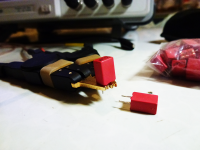 FIXSTURE_SETUP_SINGLE_CAP_AC_TEST.png311.7 KB · Views: 287
FIXSTURE_SETUP_SINGLE_CAP_AC_TEST.png311.7 KB · Views: 287 -
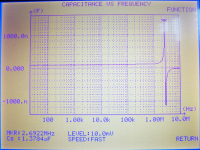 CAP_C_SERIAL_AC_TEST-2x50nF-MKP'2-(250V)--(DUAL--AC--INDUCTANCE-CANCELING-CONFIG)'.png480.7 KB · Views: 170
CAP_C_SERIAL_AC_TEST-2x50nF-MKP'2-(250V)--(DUAL--AC--INDUCTANCE-CANCELING-CONFIG)'.png480.7 KB · Views: 170 -
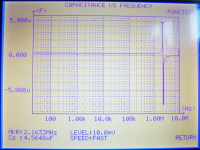 CAP_C_SERIAL_AC_TEST-1x100nF-MKP'2-(250V)--''(SINGLE_CAP)''.png469.6 KB · Views: 175
CAP_C_SERIAL_AC_TEST-1x100nF-MKP'2-(250V)--''(SINGLE_CAP)''.png469.6 KB · Views: 175 -
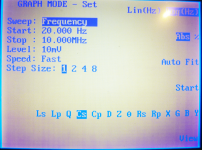 20_SETTINGS_CAP_C_SERIAL_CAPACITANCE_TEST.png420.4 KB · Views: 162
20_SETTINGS_CAP_C_SERIAL_CAPACITANCE_TEST.png420.4 KB · Views: 162 -
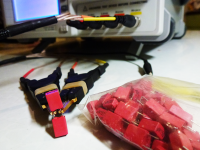 FIXTURE_SETUP_DUAL_CAP_AC_TEST.png370.5 KB · Views: 314
FIXTURE_SETUP_DUAL_CAP_AC_TEST.png370.5 KB · Views: 314
It seems these "builds" are able to mimic some "supercap" characteristics at a 1/10 price 🙂
Ricardo,
From my own experience I can tell You that this bar can be rise even
from 1/10 price to 1/100 price and even much higher .....
BTW if just mouse is pointed over each image
there is arising the explanation of it's meaning very useful...
Cheers,
A.
Member
Joined 2009
Paid Member
Thanks Andreas. I'm not sure I have understood all the data presented - you have a nice piece of equipment there, I'd love to get my final pcb checked out on that thing for parasitics. Anyhow, It looks like you have shown a fair bit of parasitic inductance which gets shunted by the capacitance at higher frequenices. Your data is also a good reminder that capacitors have a resonant behaviour up at high frequencies, in this case several MHz. When looking for caps for compensation these 'features' are important and they become most important when the open loop unity gain frequency gets up past 1MHz and the stability of the circuit becomes dominated by parasitics that are often neglected in simulations. If using the 1206 npo ceramic caps, the parasitics are reduced and the resonant frequency is pushed up a lot higher.
PCB - I would still appreciate extra error checking if anybody has the time. The circuit 'works' in spice but the schematic is then manually transcribed into Eagle. If there are errors in the posted Eagle schematic then we have a problem - I have checked it over but an extra pair of eyes is welcome here. The Eagle layout software will ensure that the pcb layout matches with the schematic (it has built in Electrical Rule Check) and it will also flag a lot of common errors (it has built in Design Rule Check) but it's not perfect and it doesn't know about parasitics, or about separation between traces for high voltages or about trace width for high currents. So I'd be grateful for any input on these potential errors in the design.
To get boards in time for the holiday break I believe I need to order them very soon so I'm proposing a deadline of end of the month - meaning I should place my order this Sunday.
PCB - I would still appreciate extra error checking if anybody has the time. The circuit 'works' in spice but the schematic is then manually transcribed into Eagle. If there are errors in the posted Eagle schematic then we have a problem - I have checked it over but an extra pair of eyes is welcome here. The Eagle layout software will ensure that the pcb layout matches with the schematic (it has built in Electrical Rule Check) and it will also flag a lot of common errors (it has built in Design Rule Check) but it's not perfect and it doesn't know about parasitics, or about separation between traces for high voltages or about trace width for high currents. So I'd be grateful for any input on these potential errors in the design.
To get boards in time for the holiday break I believe I need to order them very soon so I'm proposing a deadline of end of the month - meaning I should place my order this Sunday.
Hello Gareth,
Yes, You are point out one very acute point in an El. circ. design,
which is quite heavily persistent and covertly hidden and messing the things quite a bit.
Pls.look at Yours HM.
With my best regards,
A
Yes, You are point out one very acute point in an El. circ. design,
which is quite heavily persistent and covertly hidden and messing the things quite a bit.
Pls.look at Yours HM.
With my best regards,
A
Member
Joined 2009
Paid Member
you should try the king of the fruit ---durian . The mangosteen is another must try fruit .
cheers
kp93300
I've been to visit many times the Peninsular and never had the chance yet to visit the East. I am a big fan of durian and enjoyed eating it quite a bit on my last visit. I also like mangosteen. I also like cold Milo, Rendang.... actually my last visit coincided with Ramadan and I was able to enjoy some amazing food from Break Fast at roadside vendors.
Pls.look at Yours HM.
What does this mean ?
- Home
- Amplifiers
- Solid State
- TGM8 - my best amplifier, incredible bass, clear highs, no fatigue (inspired by Rod Elliot P3a)
